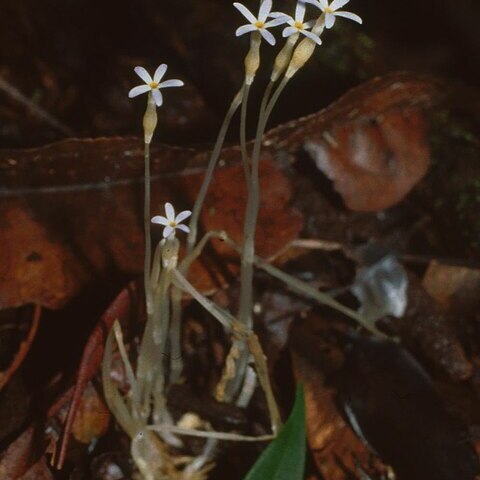heights, the anthers introrse, coherent or not, the thecae appendaged or not at the base; ovary sessile or shortly stipitate, eglandular or with 2 opposite glands at the base, the latter sometimes stipitate, I-locular, the 2 parietal placentae some-times protruding, style filiform, stigma usually simple, capitate or infundibuli-form, rarely 2-lobed. Capsules surrounded by the persistent calyx and marcescent corolla, ellipsoid to oblong to linear, septicidally 2-valvate or only medially septi-cidal, the valves remaining united at the base and apex; seeds numerous, minute, ovoid and wingless or narrowly fusiform, i.e. provided with 2 long hair-like wings. Pollen grains in monads, bilateral, heteropolar, reniform, semi-ovidal to unsym-metrically biconvex, or radially symmetrical, isopolar, oblate to spheroidal, or irregular in shape, the outline in lateral view convexo-concave to convexo-plane to depressed ovate, or ? circular to irregular, in polar view circular to oval, or irregular, 7-12 x 11-21 x 9-14 microns, or 10-11 x 12-15 microns, or 14-15 J, in diameter, 1-2 porate (one pore often smaller), the pores 1-3 microns in diameter, the pore margin re-inforced by a thickening (annulus) 0.5-1 microns wide, 1-2 microns high, consisting of sexine and/or nexine, the annulus occasionally absent; exine 0.5-1 ,t thick, at the aper-tures up to 2 microns thick, the stratification obscure, non-baculate; sexine smooth or scabrous.
Herbs, saprophytic, devoid of chlorophyll, perennial; the stems usually erect, simple to sometimes branched. Leaves small, scale-like, opposite, decussate, sessile, the opposite pairs usually ? connate at the base. Inflorescences terminal and dichasial, or flowers mostly terminal and solitary. Flowers 4-6-merous; calyx tubular to campanulate, sometimes hyaline, occasionally provided within and at the base with a verticil of small scales, persistent; corolla variously colored, much longer than the calyx, marcescent, the tube elongated, the lobes contorted, spreading; stamens included, the filaments long or the anthers sessile, inserted below the throat of the corolla tube or on the corolla tube at various

